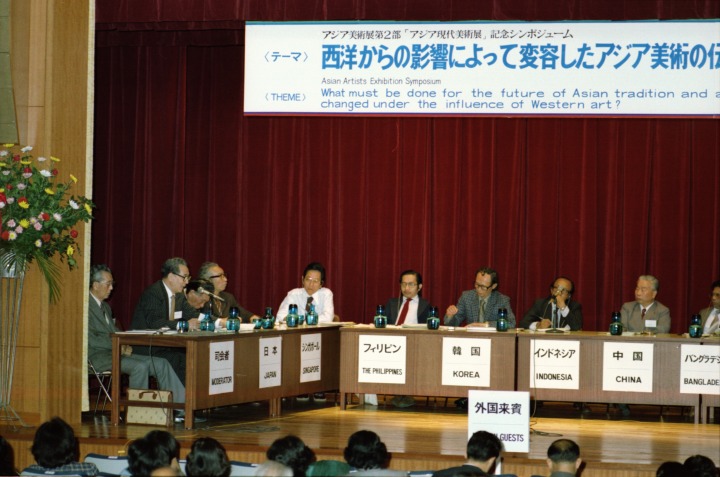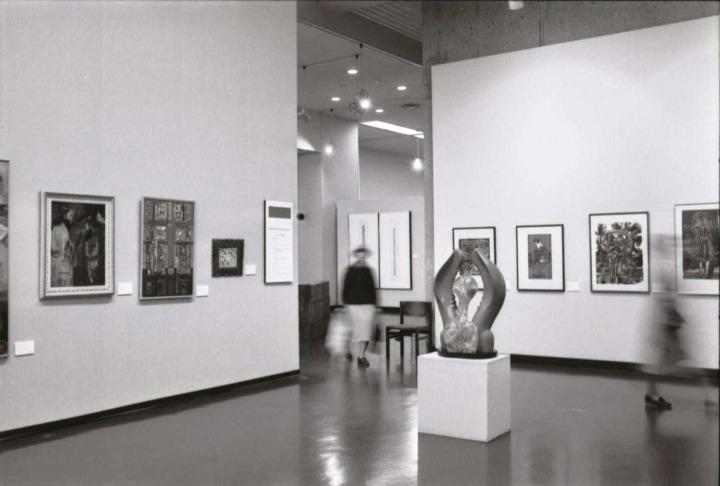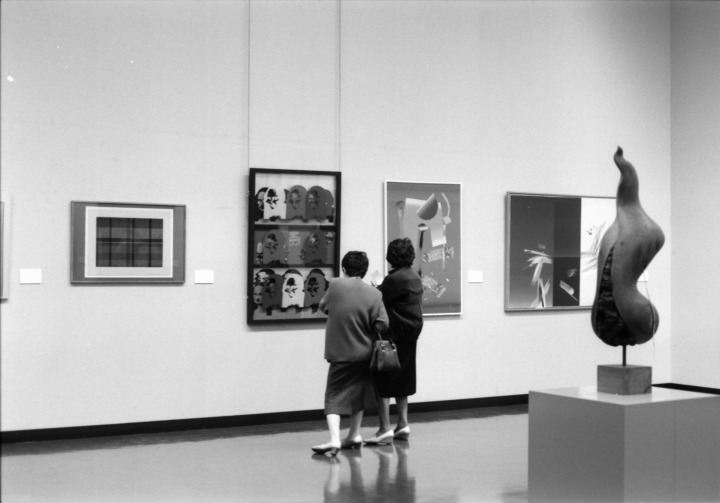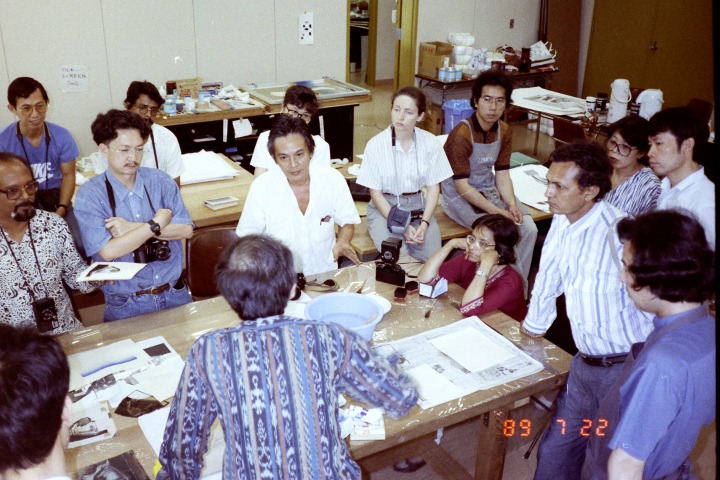Asian Art Show at Fukuoka Art Museum
The first Serial Exhibition of Asian Contemporary Art in Japan
The Fukuoka Art Museum, which was established in 1979, showcased modern art from China, India, and Japan in its inaugural exhibition. The following year, it held the exhibition Asian Art Show, which introduced contemporary art from 13 Asian countries. Compared to other exhibitions that featured artworks from more than one Asian country or were organized jointly by Japanese and Asian artists, the Asian Art Show was the first large-scale exhibition organized by the public sector (Fukuoka City), and it covered a vast area in Asia.
This exhibition took place in Fukuoka due to the history of the city as a gateway to Asian cultures in ancient time, the existing exchanges between Japanese and other Asian artists, and field research on Asian art organized by the Japan Association of Art, a Japanese branch of the International Association of Art (IAA). In addition, Koike Shinji, a committee member involved in planning of the Fukuoka Art Museum, had researched art and design in Asia since before the World War II and thus had a vested interest in making the exhibition happen. The museum canceled the original plan of holding an American contemporary art exhibition, despite having already entered the process of negotiating artwork loans with other museums, and replaced it with the Asian Art Show, as the inaugural exhibition of the new museum.
The 1980 exhibition displayed 471 artworks by 471 artists selected by a committee involving representatives, mainly of the governmental institutions, from each participating country. Many important artists and pioneers of modern art participated in the exhibition. In 1985, the continuation of the Asian Art Show was approved. 368 artworks by 268 young artists from 13 countries were displayed. A special exhibition on Balinese art was also a part of the event. Up until the second exhibition, artists from west Japan, mainly Fukuoka, were invited as well. As the second exhibition toured other prefectures in the Kyushu region, the exhibition was deemed, more or less, as a local attempt with limited scope within the Fukuoka and Kyushu regions and thus did not receive much attention from art professionals in Japan.
However, in the third exhibition in 1989, curators played a central role in the exhibition and did not rely on the committee of each participating country to select artists and artworks. The 3rd Asian Art Show was curated with a smaller number of works on the theme of “Symbolic Visions in Contemporary Asian Life”; it involved 233 artworks by 104 artists from 15 countries. Also, instead of holding a symposium, as in the previous exhibitions, the museum organized a print workshop, inviting artists to stay in Fukuoka during the workshop, to initiate exchanges between artists. The artworks produced through this workshop became a collection of various museums in Japan as portfolios of the participating artists. The exhibition tour involved the National Museum of Contemporary Art (present-day National Museum of Modern and Contemporary Art) in Korea and the Yokohama Museum of Art.
The 4th Asian Art Show in 1994 set a more challenging theme for the exhibition, namely “Realism as an Attitude,” and introduced works focusing on political and social themes. The exhibition also allocated more space for each participating artist by limiting the number to 123 artworks by 48 artists from 18 countries. By inviting the artists for three weeks, the exhibition succeeded in introducing installations and performances—genres of art that were rapidly developing in Southeast Asia and China—and created great impact as a contemporary art exhibition through national media. Heri Dono’s performance, which involved the tradition of extensive shadow puppetry and a collaboration with a Japanese butoh dancer, and Lee Wen’s performance, which extended outside the museum (including Fukuoka downtown), left vivid impressions on the audience. This exhibition toured the Setagaya Art Museum and other two museums. During the same year, large-scale exhibitions on Asian art were held in other cities, including Hiroshima, as the Japan Foundation organized a series of symposiums and created an “Asian art boom.”
The Fukuoka Art Museum shifted its program to focus on the Asian Art Show—which was originally considered an international exchange program—and started the “Asian Art Today” series, a solo exhibition of an Asian artist, in 1987. The museum built its Asian art collection mainly through four Asian Art Shows and 10 solo exhibitions, which were moved to the Fukuoka Asian Art Museum when it opened in 1999.

Symposium at Contemporary Asian Art Show, 1980.

Contemporary Asian Art Show, 1980, Indonesian section. The sculpture is by Gregorius Sidharta Seogijo.

2nd Asian Art Show, Special Section Art of Bali.

2nd Asian Art Show, 1985, Thai section, with "Metamorphosis of Mona" by Apinan Poshyananda.

3rd Asian Art Show, 1989, Print Workshop with Yoshida Hodaka as a tutor.

4th Asian Art Show, 1994, with woks by Navin Rawanchaikul (left) and Dadang Christanto (foor).

4th Asian Art Show, 1994, Heri Dono's performance in Workshop.
